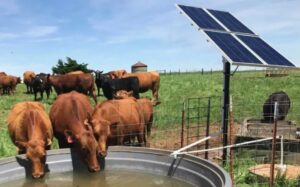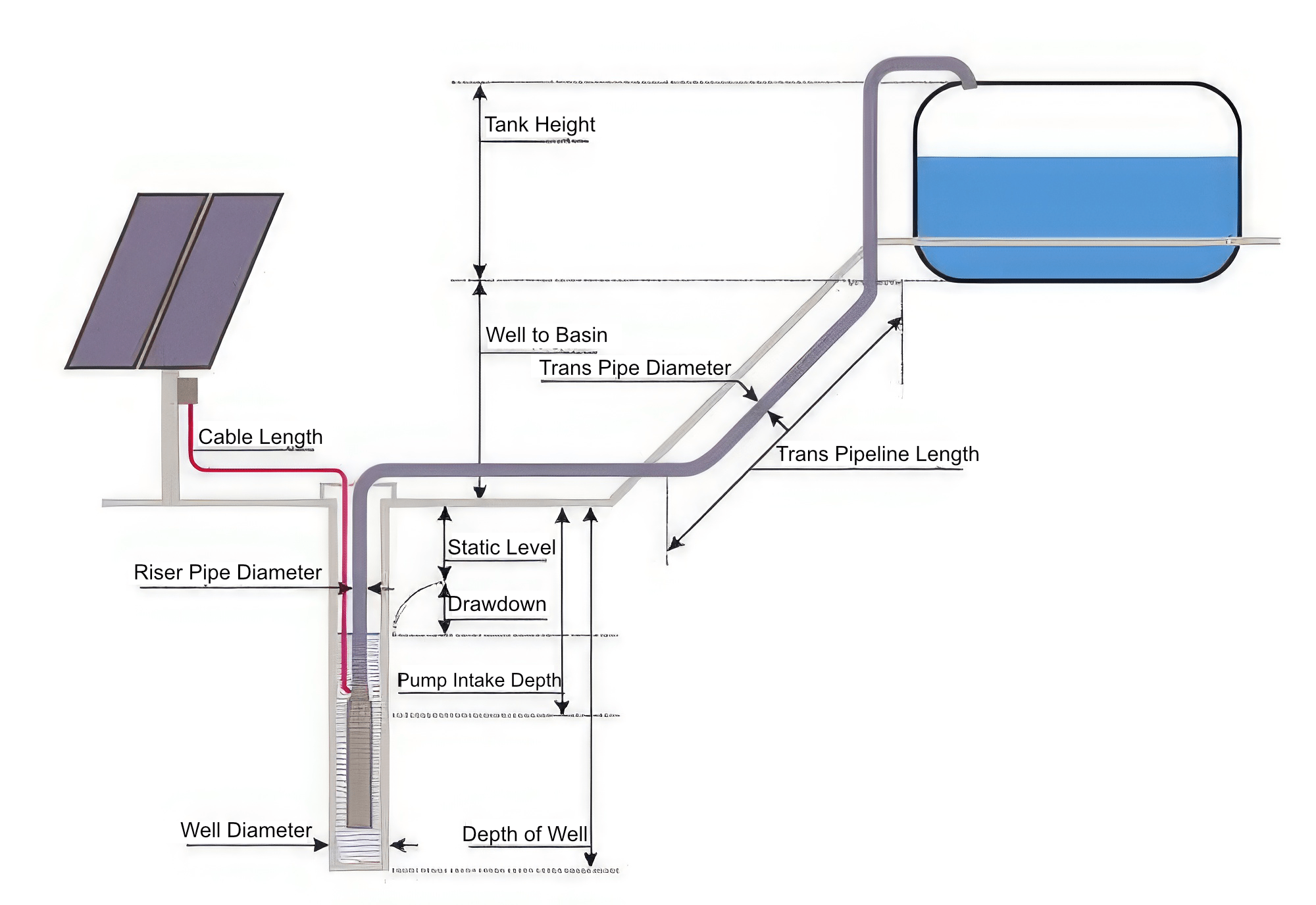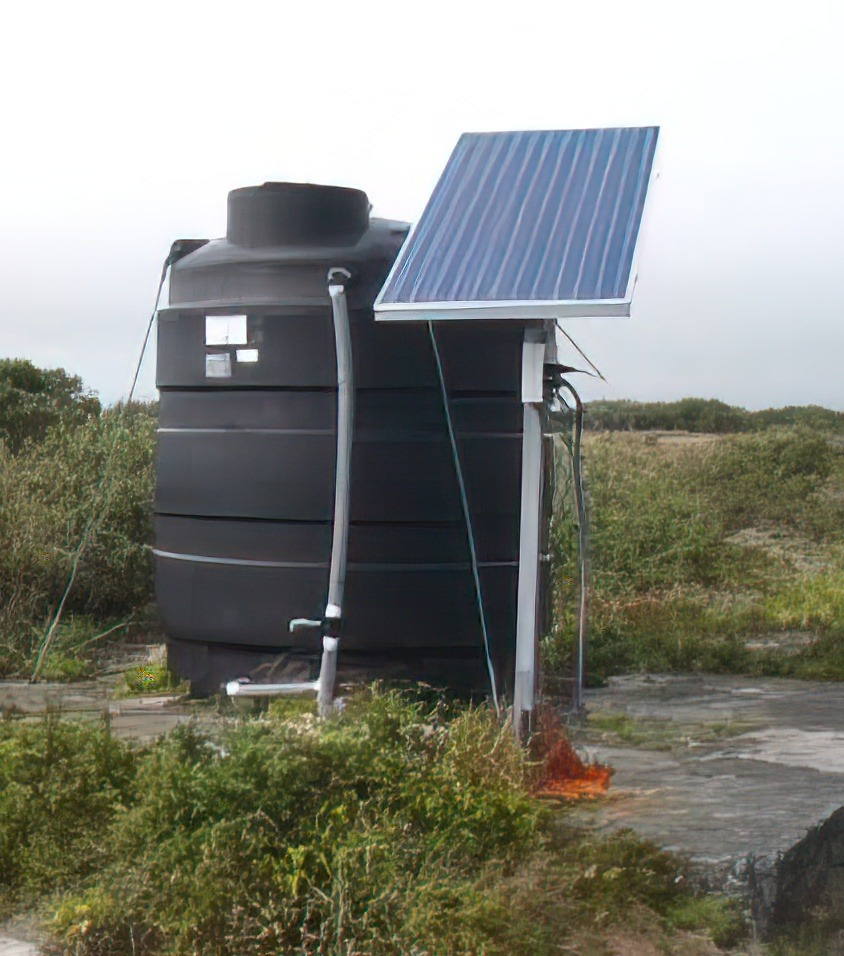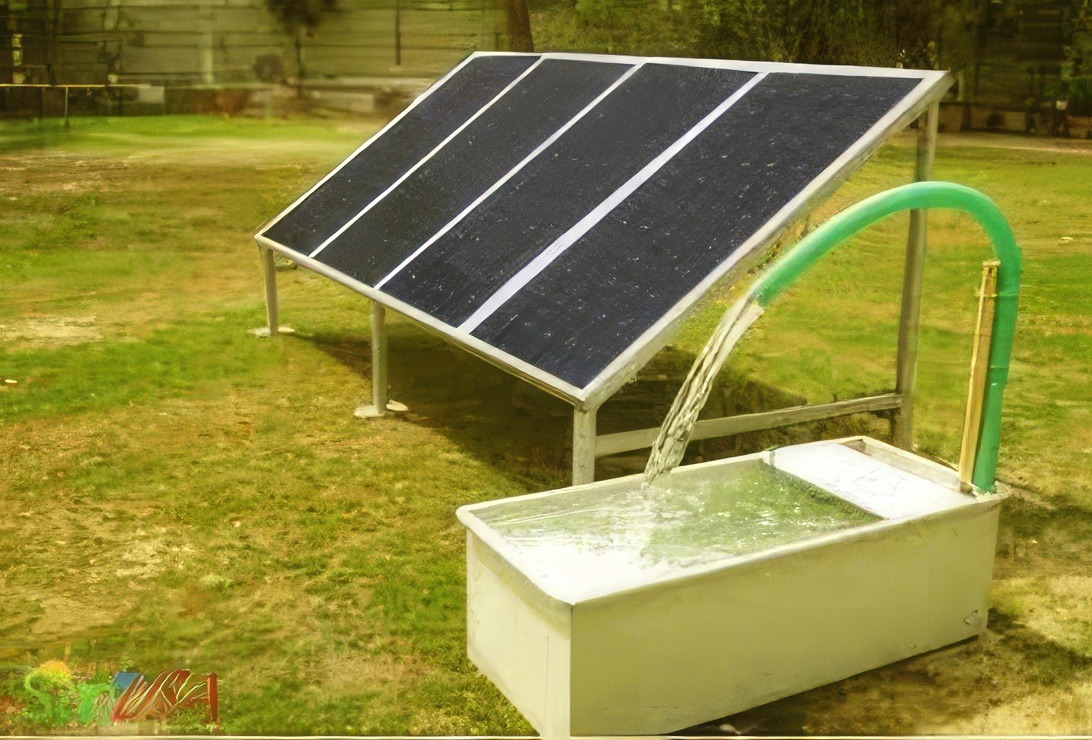SOLAR DIRECT WATER PUMPING
 Water and water storage are constant topics of conversation at Backwoods Solar as water resources are under constant strain nowadays. As solar energy becomes more affordable and efficient, the choice of a DC solar direct water pumping for remote applications becomes clearer. There are many remote situations where a solar direct water pump just makes more sense compared with a conventional grid-connected AC pump.
Water and water storage are constant topics of conversation at Backwoods Solar as water resources are under constant strain nowadays. As solar energy becomes more affordable and efficient, the choice of a DC solar direct water pumping for remote applications becomes clearer. There are many remote situations where a solar direct water pump just makes more sense compared with a conventional grid-connected AC pump.
Depending on the application (irrigation, ponds, livestock, deep well water storage, or off grid water source) consider installing a new DC solar direct pumping system as close to the water source as possible. Most DC solar direct pumps use half the energy consumed by an AC pump, and can be more cost effective due to location and/or fuel dependence. A solar solution is cleaner and now cheaper than it has ever been. There are some basics you will need to know before you make the move to a solar direct water pump. the diagram below defines some of these terms further.

- How deep is your well or other water source? “Water source” can refer to any well, spring, creek, or storage tank. Depth is a crucial measurement and is usually measured in feet; and is incredibly helpful when communicating with manufacturers or distributors. The depth of your well or water source determines the type of pump you will need. When pumping from a storage tank, cistern, spring or creek you may need a shallow level submersible pump or surface pump.
- What is the Static Water Level or Static Head in the well? This is the measurement from ground level of the well to the top the surface of the water, at rest within the well, from the natural production of the underground spring or stream.
- If you have an existing well, do you know how many gallons per minute your well produces? Usually your well driller can provide you with this information, you might have it already, or you will have to estimate how much “draw-down” the well will have during pumping.
- How many gallons per day will you need?
- Are you planning on pumping to a non-pressurized holding tank or to a pressure tank?
- And, how many feet above the well head is the tank located?
- If you will be using a pressure tank is how many pounds of pressure will you need from the pumps performance?
- If PV direct, without batteries, how many feet from the array to the well head (either of the surface pump or a submersible pump deep in the well? Some of the finer details that are often overlooked in the planning stage are the distances that the wire or conduit from the PV modules will need to be to get to the well head. If there is a battery bank, the distance from the well head to the battery system will have to be measured.

As touched on previously, DC submersible pumps only use 20% to 50% as much energy per gallon pumped as an AC centrifugal pump. Most DC pumps operate slowly and are less likely to deplete the water level in a slow recovery well. DC pumps can be powered direct by solar modules, without batteries, or powered by the same battery bank in an off-grid home like any DC appliance as long as the well is within about 200 feet from the house. Submersible pumps cannot freeze or lose their prime like surface pumps can. The use of a storage tank with a DC direct pump offers more water volume for use when the sun isn’t shining.
So, this leads to the next couple of questions to consider as you design your system.
- Do you want to power the pump directly from a PV array, which implies that you will only get water when the sun is shining unless you have a storage tank?
- Or, are you considering having your pump powered by a battery bank for use when little to no sun is available?
 Drawing a rough diagram of your proposed system is a good idea so you understand the scope of the project. Then give the pumping experts at Backwoods Solar a call and we can help you design the right system for your application. A solar direct water system is one of the easiest solar power systems to install and will ultimately save you time and money.
Drawing a rough diagram of your proposed system is a good idea so you understand the scope of the project. Then give the pumping experts at Backwoods Solar a call and we can help you design the right system for your application. A solar direct water system is one of the easiest solar power systems to install and will ultimately save you time and money.

